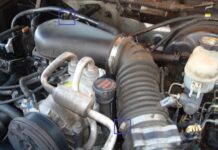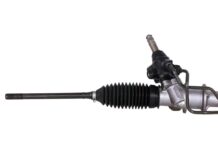What is an Oil Pan? What are the symptoms of an oil pan failure? What is the reason for oil pan leakage? What are the parts of an oil pan? What is the function of the engine lubrication?
For a vehicle to run smoothly, it needs the right amount oil. Engine oil helps cool the engine and reduce friction between metal components. It is important to ensure your vehicle has adequate oil.
Lubricating the engine requires several parts. The oil pan is one of these components. The sump is where oil is stored and rests before being pumped into the engine. The oil pan isn’t immune to wear, as with all parts of a car. You must immediately replace the oil pan if it is damaged.
What is Oil Sump?
The oil sump, a reservoir that looks like a bowl, is where oil is stored and cooled before being pumped into an engine. While they are often made from pressed-formed steel sheet, there are also cast iron, aluminum and hard plastic options. The lower section of the engine is covered to keep out dirt, rain, and other foreign substances.
The oil pan plays a vital role in both cooling and storing oil. The crankcase will cool the oil by allowing air to flow underneath it as the vehicle drives forward. This is the “The” “Wet sump system” It is universally applicable to all standard production vehicles. The system by which oil is transferred from the sump to another reservoir, is known as the “Dry sump system” .
The oil pan contains several components that help to keep the engine properly lubricated.
Oil Pan Gasket
The oil pan seal is between the oil pan & the engine block. It prevents oil leaking out. It is typically made from rubber, cork, or fiber. Without gaskets, liquid gaskets are applied to crankcases.
Drain / Drain plug
The location of the oil drain plug can be found at the sump. This is the lowest point in the lubrication systems. To allow oil to drain, oil plugs are threaded bolts. When the drain plug is removed, it has a washer that can be easily replaced.
Some drain plugs have magnetic connections. The purpose of magnetic drain plugs is to capture very small metal particles and prevent the filter delaminating.
Oil Partition Plate
Sumps can be either flat or necked. Baffle plates are used in some sumps to stop oil from sloshing. As the car accelerates and corners, the oil in the crankcase expands. This can lead to oil leaking from the pickup tube, which may cause the oil pumping into your engine to be temporarily stopped.
These compartments are often used, especially in sports cars. The pods come in many forms but all serve the same purpose.
Oil Deflector
A vehicle may use an oil deflector similar to a baffle to stop oil from splashing onto its rotating crankshaft. These deflectors are made from sheet metal. Some deflectors have oil-removal scrapers.
Dipstick
Nearly every engine has a dipstick to measure oil level. The dipstick must be immersed in an oil pan. It displays the oil level thanks to the maximum and minimum level marks. The electronic oil level sensors on new cars allow you to see the oil level at the instrument panel.
What are the signs of oil pan failure?
It can be difficult for you to inspect the oil pan because it is under your vehicle. But there are signs to help you understand the need for control.
- – Illumination for check engine light
- – Oil pressure lamp burning
- – Low oil levels
- – Oil deposits beneath the vehicle
- – Leaks around oil drain plug
- Visible damage to the oil tank
- – Engine overheating
- – Smoke from oil leaking from gaskets falling into exhaust manifold
- – Burning oil smell
Why does the Oil Pan Leak
An oil pan leak can usually be caused by one of two things. This could be caused by an impact on the vehicle’s floor or damage to its gasket. High objects or accidents can cause the oil pan’s oil to leak by impact. The gasket can wear over time. Excessive heat can cause rubber and cork gaskets to shrink, harden and lose flexibility. This can cause oil to leak from your crankcase.
Also, repairman errors can lead to individual mistakes. Apprentices are usually responsible for changing the oil in vehicles. Oil can leak if the oil sump plug has been tightened incorrectly or the thread is not followed correctly. You should also ensure that the oil filter is not overlooked. High-quality original filters should be used in place of any aftermarket oil filters.
It will save you time and money to replace an oil pan that is damaged as soon as possible. A leaking oil pan can lead directly to low oil levels and internal engine damage.
How does the Engine Lubrication System function?
Oil travels from its reservoir to the engine’s oil pan. The oil is then pumped around to the engine.
The oil pump plays a vital role in the engine’s longevity. The oil pump pulls the oil from the sump through the collecting pipe. It then delivers the oil to the engine via the oil channels under pressure.
The oil flows from the pump to an oil filter. The oil filter filters out microscopic particles of oil and ensures that clean oil is delivered to the engine. The engine receives clean oil.
Bearings support the crankshaft in the constantly changing oil film. Oil cools the pistons and keeps them clean with the oil’s cleaning feature. The oil has an anti-wear feature that allows for the maintenance of valve adjustment.
The most significant load on an engine is the load on the valves. This is the area where oil feels the greatest pressure. These metal parts are very mobile and require constant lubrication in order to prevent friction and damage. Only oil can stop metals coming in contact with one another.
Through the return channels, the oil completes its journey and returns to the crankcase. This entire process takes only 5 seconds.

















